Process Maps are the absolute superhero of the Business Improvement landscape and can be used for a multitude of purposes including:
- Distinguishing ambiguous or uncertain problems
- Analysis for process improvement
- Training new starters
- Refresher training
- Displaying compliance with regulatory requirements
- Trimming unnecessary steps
- Circulating best practice…
I could go on and on but you came here to find out how to create a process map in 3 steps so let's get on with it...
How to Create a Process Map Like a Champ: 3 Steps
Searching ‘how to create a process map’ in Google returns 202,000,000 results, all differing in methodologies, style, detail level, what to include, what not to include…
Below are three simple steps that will make your life easier, and keep you from drowning in infinite Google search results.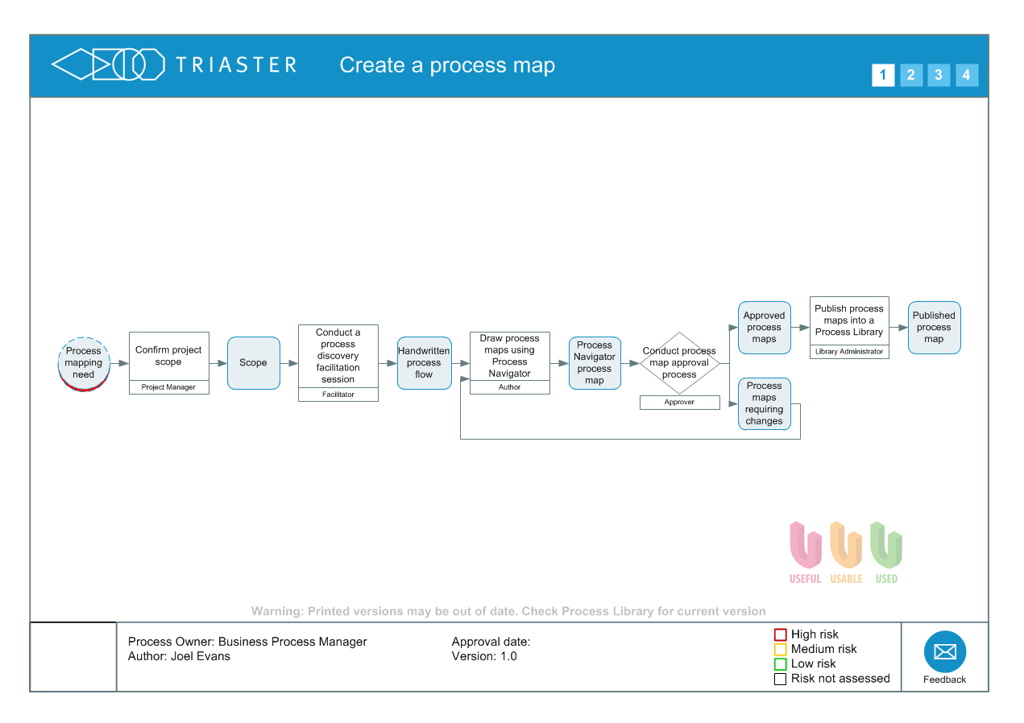
1. It's All in the Preperation
I always find that the hardest work in drawing a process map comes before you even think about drawing the map. The hard work is all in understanding the process. Not in drawing it. To help with this, I like to have the process already created before opening my mapping tool. I do this by either using post it notes on brown paper (taking photos is always recommended here, as conscientious housekeepers tend to tear these down from the walls) or by using an IPO table.

IPO Tables
IPO tables or to give them their full name ‘Input Process Outputs’ tables are a simple mechanism to focus the mind on what is being used and produced. People can easily tell you what they do during a working day, but when you ask them what they produce during that day, they often struggle. The way to use an IPO table is to write down inputs and outputs (as its name suggests) with the activity that links them.

2. Ask Yourself Questions...4 Questions to be Precise
Whether you use sticky notes on brown paper, an IPO table, or any other method of process discovery work, the following key questions should ensure that you are obtaining the correct information for your process map.
1. What Deliverables do I produce?
Knowing what is produced is an essential first step on the path to creating a process map. The mapping methodology requires that these Deliverables be explicitly identified.
2. What are my inputs?
Until you know what is required to produce a Deliverable, you cannot begin to question the time, quality and cost of supply.
3. How do I produce my Deliverables?
Triaster supports Activity decomposition so that the Process Author can describe in detail each step involved in the production of a Deliverable.
4. Who uses what I produce?
This is a very important question and one that naturally opens up communication channels and weakens departmental boundaries.
As well as those key questions, you may also want to consider:
- What systems are used throughout the process?
- What handovers exist throughout?
- Who is responsible and accountable for each of the activities?
- And who is the process owner?
So by now, you should have a good idea of the process flow and be looking to put this information into a process map.
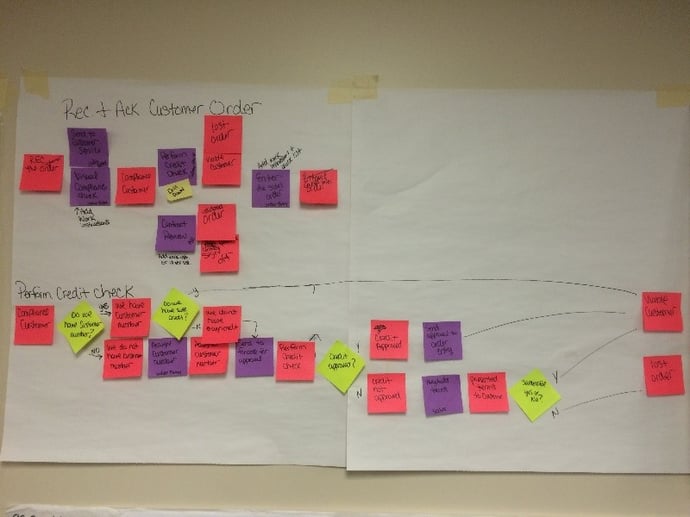
For a more in-depth explanation of what you've just read, download our 21-page guide to all things process mapping. To get yours now, please...
3. Harness the Power of Process Mapping Tools
There are many process mapping tools out there with varying degrees of usefulness. At Triaster, we Use Triaster's Process Navigator alongside Microsoft Visio - which is a very simple way of drawing process maps, if you can drag, drop and type, you can use this tool.
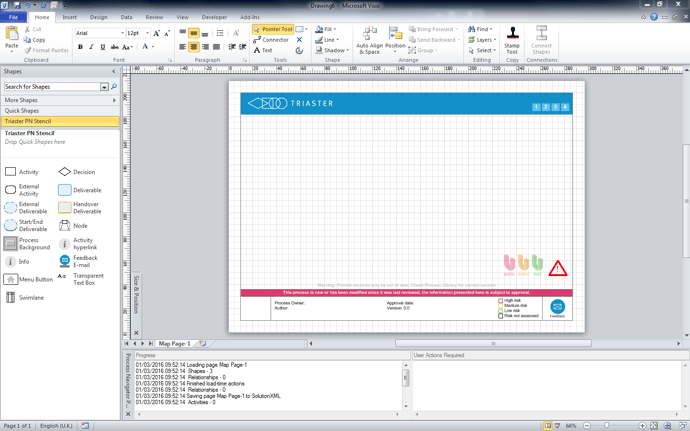
Process Mapping Shapes
One of the first things to think about is the shapes you want to use on your process maps. The methodology I use is called Noun-Verb and is very straight forward. Using two main shapes (white rectangles for Activities and coloured squares for Deliverables and the occasional Diamond for decisions) keeps things really simple.
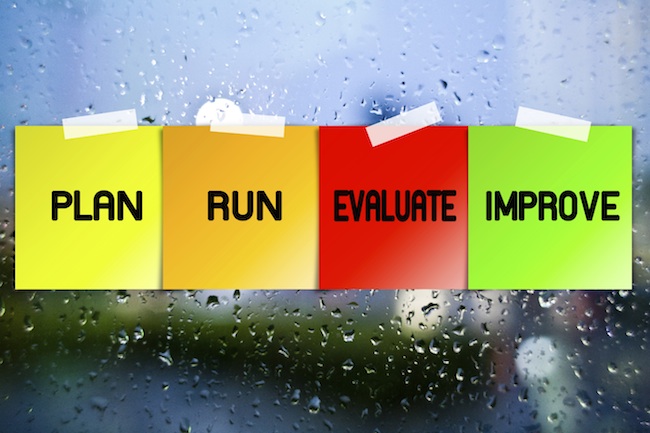
Image sourced from: heflo.com
Activity
Something you do. Described using a verb, activities are connected to two deliverables (an input and an output), they are instructions for somebody to do something. For example:
- Complete the application form
- Submit the form to Line Manager for approval
- Compile the list of delegates
- Request an order form
Try to imagine the words ‘How to…’ or ‘How do I…’ before each of the activities to ensure they are worded correctly.
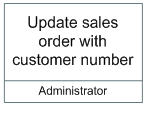 Deliverables
Deliverables
These are something you either use or produce and are described using nouns. Sometimes called internal or external deliverables to specify if something is produced or used within or outside the organisation. Deliverables are inputs and outputs. Each activity should have an input deliverable and an output deliverable.
Try to imagine the words ‘Show me the…’ before a deliverable to ensure they are worded correctly.
 Decisions
Decisions
This is a special type of Activity (usually in the form of a question) where only one of the outputs is produced, not all of them.
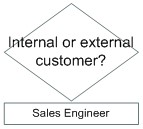
To draw the process map, drop the shapes on to your page one by one and connect them together horizontally using the connector tool. I always try to map horizontally, on an A4 page, with no more than four or five activities per page, this ensures that there is not too much information on the page that would confuse an end user of the map.
To ensure your process maps are Useful and get used by you and those in your organisation, make sure you download the 21-page guide on all things process mapping which can help you create accurate maps that increase process efficiency...
Related articles:
http://blog.triaster.co.uk/blog/the-top-10-benefits-of-process-mapping
http://blog.triaster.co.uk/blog/best-practice-process-mapping
http://blog.triaster.co.uk/blog/mapping-business-processes-what-level-should-i-map-to
http://blog.triaster.co.uk/blog/what-is-the-noun-verb-methodology-of-process-mapping
Written by Joel Evans
Joel joined Triaster in June 2014 and spent several years delivering consultancy and training services on site with customers, helping them to achieve many different business improvement objectives, in many different corners of the world. He left Triaster in November 2016 in order to move back closer to family.


